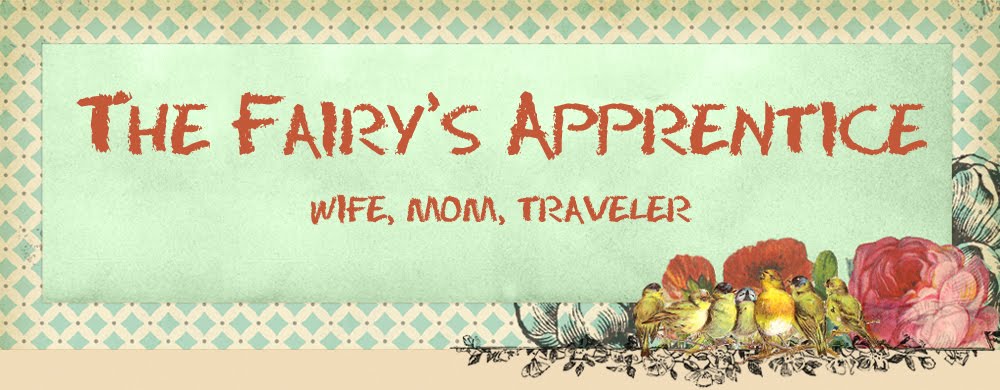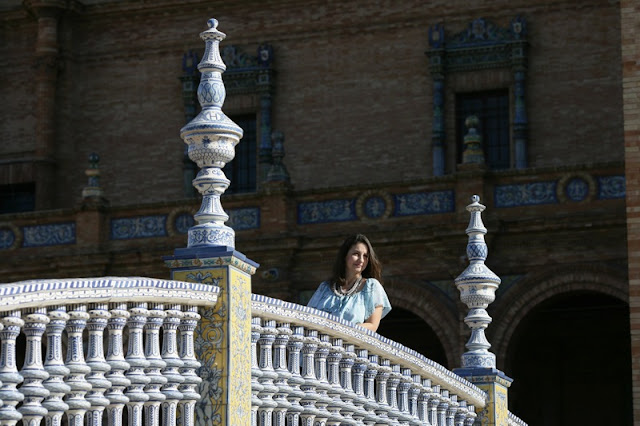We arrived in Seville in a beautiful November evening, and because we were very tired we passed the hotel without noticing. When we finally saw the numbers on the street, we realised we have to turn back.
The Silken Al-Andalus Palace Hotel was a very pleasant surprise, a 4-stars business hotel in a quiet area of the city, little bit far from the center, but that explained the very low price for such a luxury hotel. Beautiful lobby, with the huge tulip chandellier, and very tasty breakfast.
According to legend, Sevilla was founded by Hercules and its origins are linked with the Tartessian civilisation. It was called Hispalis under the Romans and Isbiliya with the Moors.
When visiting a new city, we love to walk, so we woke up early and we were heading to the center. We didn't appreciate the distance at all, so we walked... and walked... and admired the beautiful architecture... and walked...
The first place we stopped was the Traditional Arts and Customs Museum, with a gorgeous water basin in front of it, with white lillies and decorative reed.
Is situated in Maria Luisa Park, which houses also the Plaza de España.
So, the next stop was Plaza de España, a spectacular place, with fountains and rich decorations, conceived by the architect Anibal Gonzalez for the Ibero-Americana Exhibition from 1929.
The Seville City Hall is also located in Placa de España.
I posed next to the arthesian fountain, to catch the rainbow in the water.
Did I mention I love rainbows?
Along the walls of the Plaza de España are many tiled alcoves dedicated to the Spanish Provinces. Each one representes a different province of Spain with beautiful pictures of the traditional crafts.
Each alcove is beautiful decorated and it looked to me honey for the eyes.
This Plaza is a huge half-circle with buildings, accesible by numerous gorgeous bridges.
The hand-painted balusters impressed me a lot, I found the pattern and the color combinations so rich and beautiful!
The architectural style mixed some Art Deco and Neo-Mudejar, and it's an outstanding example of Regionalist Revival Architecture, a mixture of diverse historic styles.
Bogdan suffered a lot because of the heat, but I love high temperatures!
This is the Torre del Oro (the Gold Tower), it was bild as watchtower by the Berbers, during the Almohad dynasty in the beginning of the 13th century. During the Middle Age it served as prison and as a secure enclosure for the protection of precious metal brought by the fleet of the Indies. This might be the origin of the tower's name.
Then we stopped at the Cathedral of Saint Mary of the Sea, the third largest church in the entire world.
The Cathedral is one of the main landmarks of the Seville, it was built on the former site of the city's mosque, around year 1500.
Is very rich decorated and is the largest Gothic cathedral in the world. At the time of its completion it supplanted the Hagia Sophia from Istanbul as the largest in the world.
From the ex-mosque the builders kept the Giralda, a minaret converted into a bell tower, one of the city's most famous symbols.
This small chapell is viewed from inside of La Giralda tower.
And because there is someting high in the city, we had to climb it.
The cathedral is also the burial site of Christopher Columbus.
After the Cathedral, we entered in Alcazar, the royal palace from Seville, originally a Moorish fort.
The upper floors of the Alcazar are still used by the royal family as the official Seville residence.
The beautiful gardens of Alcazar keeps you more outside than inside,
we rather preffered to walk in the open air.
The Courtyard of the Maidens refers to an old legend saying thet the Moors demanded 100 virgins every year as tribute from Christian kingdoms in Iberia.
I needed some rest after such a crazy walk.
The reflecting pool in the garden was covered in marble for Ridley Scott's film Kingdom of Heaven.
The palace was the birthplace of Infanta Maria Antonietta of Spain in 1729.
As a cultural heritage, painters such as Velázquez,
Murillo and Valdés Leal, and sculptors like Martínez Montañés were born in Seville and left behind important pieces of art.
The city also assumed an important role in world literature (Vicente Aleixandre is a Nobel Laureate) and was the birthplace of the myth of Don Juan.
Oh, oh, oh, and I almost forgot the best known names of natives from this city:
Jose Antonio Reyes, Fernando Muñoz, Sergio Ramos. Footbal players.



















































